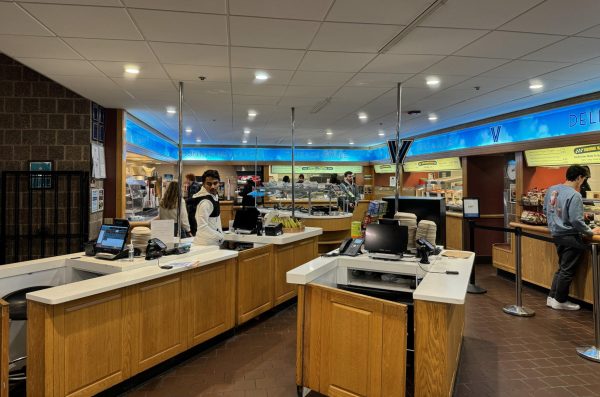‘Bloody Sunday’ marches into Connelly
April 24, 2003
Have you ever wondered what U2’s song “Sunday, Bloody Sunday” is about? The tune focuses on events which unfolded during one ill-fated day in Irish history known as “Bloody Sunday.” On Jan. 30, 1972, a group of peaceful protesters were marching in Derry, Northern Ireland, to oppose the loss of civil rights, when British peacekeeping forces opened fire on them. Thirteen civilians were killed and another 13 were wounded in the melee.
These events are meticulously recreated in the recent film “Bloody Sunday,” a British-Irish co-production, written and directed by Paul Greengrass. With 10 years of current affairs experience before becoming a filmmaker, Greengrass ably imbues his film with reality, making good use of hand-held cameras, grainy film stock and improvised dialogue to achieve verity. In addition, several of the victims’ family members helped re-enact the march for the cameras.
Greengrass makes sure that there are plenty of artistic details on hand. Many of the film’s images, some fabricated and some real, are indelible, including one of a “Derry Civil Rights” banner, saturated with blood, used in order to cover a corpse.
But, what is arguably most interesting is that Greengrass, who based the film on Don Mullan’s book “Eyewitness Bloody Sunday,” tries to present both sides. Although the filmmaker’s sympathies are clearly with the protestors, he shows the tragic events unfold from the perspectives of both the Irish marchers and the British soldiers. In fact, “Bloody Sunday” has been compared to another recent and equally stylish film, “Black Hawk Down.” Both films whisk viewers into an explosive pressure-cooker situation that quickly balloons out of control.
While “Bloody Sunday” only focuses on one day in the 700-year-old struggle between the British and the Irish, it was indeed a fateful day. The massacre has been blamed for turning what had been a relatively peaceful wave of dissent into a bloody civil war for the next two decades, as well as inspiring thousands of Irish youths to join the IRA. However, Greengrass has openly expressed hope that his award-winning film will lead to “a sense of reconciliation about … ‘this terrible and traumatic day.'”
Also worth mentioning, is the support that “Bloody Sunday” has received from a host of Irish entertainment figures, including U2 – its song is on the soundtrack. The film also received support from one of the executive producers, Jim Sheridan, who made another docudrama in 1993 about the political situation in Northern Ireland, “In the Name of the Father.”
The final offering in the current Cultural Film and Lecture Series, “War and Its Effects,” “Bloody Sunday” will be shown on Saturday at 7 p.m., Sunday at 3:30 and 7 p.m., and Monday at 7 p.m. in the Connelly Center Cinema. Admission is $3 for students and $4 for all others.
At the Monday night showing, there will be a presentation entitled “Along the Fatal Barricade.” The speaker will be Joe Thompson, an associate political science professor at Villanova. He is the author of “American Policy and American Famine” and “American Policy and Nothern Ireland: A Saga of Peace building.” Dr. Thompson has also written several articles on the Irish peace process.










